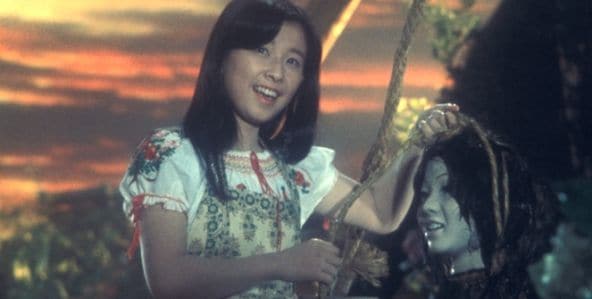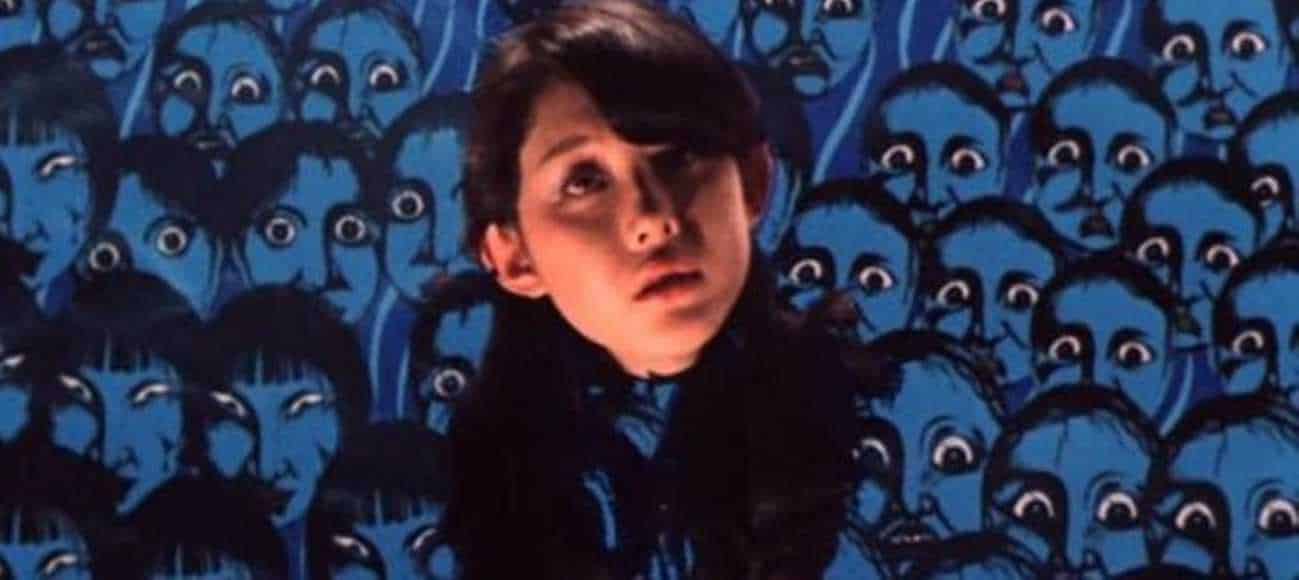Table Of Content

Mr. Obayashi was born in 1938 and started making experimental films in his 20s, becoming involved in the 1960s with an art group whose members included Yoko Ono, before going on to a prolific career as a director of commercials. The press notes for “House” state that the story originated from the “eccentric musings” of his 11-year-old daughter, a nice, perverse touch. Whether “House” was her fantasy or his, Mr. Obayashi has created a true fever dream of a film, one in which the young female imagination — that of his daughter, Gorgeous or both — yields memorable results.
How 'House' Is Nobuhiko Obayashi's Answer To Spielberg's 'Jaws' - Collider
How 'House' Is Nobuhiko Obayashi's Answer To Spielberg's 'Jaws'.
Posted: Mon, 28 Mar 2022 07:00:00 GMT [source]
Review: Labyrinth of Cinema Is a Time-Swirling Trip Through Japanese History
Are the girls simply callous, or is 32 years of distance from unprecedented horror enough to justify their lighthearted attitudes? It isn’t until the final two survivors find and read Auntie’s diary that they recognize not only the tremendous loss and betrayal that the war left in its wake, but how the shadow of that loss has deformed into the specters and nightmares that now assail them. Their only hope as they float upon an ocean of blood, out of options and no exit in sight, is that Mr. Togo might finally arrive at the house just in time to save them. House’s soundtrack had been finished a year before Obayashi shot the film, and when he found himself struggling to give effective verbal direction to the novice actresses, he played the soundtrack for them as they acted out the scenes. In “Constructing a House,” Obayashi mentions that the actresses “belonged to a younger generation that found it easier to express emotion through chords, melodies, and rhythms than through words.
Book Review: Insomnia Author Kelly Covic
Following this, she shrugs and sighs, musing, “It must have been my imagination.” She continues on as if nothing ever happened and the scene is never referenced again. The film is chockfull of scenes like this and it will either captivate or infuriate the viewer to no end. Like a cat which materializes one day on Oshare’s window sill, spews blood in another scene, and plays the piano in reverse. A schoolgirl travels with six of her classmates to her ailing aunt’s creaky, remote country home, where supernatural events occur almost immediately. They come face to face with evil spirits, bloodthirsty pianos, and a demonic housecat.
Podcast: The Golden Age of Horror – Eps 1
In the morning, Ryoko arrives at the house and finds Gorgeous in a classic kimono. Gorgeous tells Ryoko that her friends will wake up soon and that they will be hungry.
Cinematography
We live in an age of so many pathetic wannabe cult pictures that it’s refreshing to occasionally come across the real deal. This website uses Pico to reflect your current subscription status, as well as keep you logged in. Leaving this enabled will mean that you don't need to log in each time you access this website to unlock articles.
The Daily Stream: In The Beautiful, Bizarre Blockbuster Hausu, A Teenage Girl Is Eaten By A Piano - SlashFilm
The Daily Stream: In The Beautiful, Bizarre Blockbuster Hausu, A Teenage Girl Is Eaten By A Piano.
Posted: Thu, 09 Jun 2022 07:00:00 GMT [source]
This lilting music-box melody is the prime transformative catalyst not only for Gorgeous, but for actress Kimiko Ikegami. Without the benefit of seeing the visual effects that accompany her possession, Ikegami has only the leitmotif to inform her new thousand-yard stare, the flat affect that crawls into her voice, her slow shuffle down the stairs and to the telephone. Much like the house (and House) itself, the leitmotif’s externally inviting character has been subsumed by its new association with a haunted, heartbroken past—for us, for the actresses, and for Gorgeous, whose dreams of eternal love are destroyed by her new stepmother and the vision in the mirror. Although Obayashi is quick to textualize his observations about the differences in perception between younger and older Japanese moviegoers—“it’s like a cotton candy! ” one of the girls coos early in the film at footage of an atomic detonation—his intentions in doing so aren’t initially clear.
Casting
The art design is meticulous as is the sound, but the acting is horrid most of the time. There’s also some subplot involving a professor, a bucket, bananas, and a poltergeist but I’ll leave that to you, dear reader, to decipher. To add to the absurdity, characters are named after singular traits which define them throughout the film such as Melody who plays the piano, Fanta the daydreamer, and Mac the glutton. We also have KunFuu who, in one scene, battles a battalion of lumber (yes, lumber).

Review: The Book of Eli
At the same time, a piano downstairs calls out to her musically-oriented friend Melody. After briefly studying the sheet music, Melody begins to play the leitmotif as well. Gorgeous, music box still open, watches as her reflection turns into her aunt’s, whose face twists into a terrified scream before the mirror shatters. Auntie’s fractured reflection weeps blood, a sinister cackle resounds, and Gorgeous, shellshocked, is consumed by ghostly flames. The leitmotif’s musical simplicity grants it an immediately recognizable quality, which primes the viewer for its approximately 20 appearances in various permutations throughout the film.
Obayashi was a director of TV commercials before this full-length feature and in many ways it shows. There is a glossy glow to everything and an obsessive attention to detail that allows even his greatest missteps to seem somehow intentional and (usually) technically sound. Although the undercurrent of incredible sadness that surges through House ages us just a bit, Obayashi still sends us out on one final swell of fantasy, forgiving us our naïve need to believe in beauty even as it walks hand in hand with his damning excoriation of humanity. There’s joy amidst fear, and there will be loss in our future, and from the cinematic overlap of these truths emerges Obayashi’s “story of love.” Like a leitmotif, no matter what form it takes, we all eventually hear the same melody. Nobuhiko Obayashi’s House was released in Japan in 1977 to a highly polarized reaction.
Even after the flesh perishes, one can live in the hearts of others together with the feelings one has for them. Therefore, the story of love must be told many times so that the spirits of lovers may live forever. The aunt disappears after entering the broken refrigerator, and the girls are attacked or possessed by a series of items in the house, such as Gorgeous becoming possessed after using her aunt's mirror and Sweet disappearing after being attacked by mattresses. The girls try to escape the house, but after Gorgeous is able to leave through a door, the rest of the girls find themselves locked in. The girls try to find the aunt to unlock the door but discover Mac's severed hand in a jar.
The adventurous horizons and unblemished romance promised to a post-war generation, on which she feeds to sustain her bitter unlife, are illusions. What Obayashi allows us to do through the soundtrack is cope with the eternal war between these opposed illusions, our fears and our futures, by reconciling them rather than turning away from them completely. House’s leitmotif evokes youthful wonder (the “fantasy”) and maps it to an aesthetically and emotionally polyvalent experience, but through the narrative in which it’s figuratively and literally situated (the “ghost story”) it also warns us not to forget the past when beguiled by the beautiful things that spring forth from it. At the midpoint of the film, she enters Auntie’s room and sits at a vanity adorned with tokens of youthful beauty—makeup, fancy hairpieces, a photo of a lover long since passed. She finds a powder compact music box which, when opened, plays the now-familiar House leitmotif.
Gorgeous enlists six of her friends as accompaniment, a giggling retinue of nymphs fancifully named Sweet, Melody, Fantasy, Prof, Mac and Kung Fu. Traveling by train, wheels and foot, they arrive at an isolated house, where the aunt, who’s in a wheelchair (if not for long!), lives with her white cat, whose eyes beam out ominous green sparks and who has been immortalized in artwork throughout the house. Delirious, deranged, gonzo or just gone, baby, gone — no single adjective or even a pileup does justice to “House,” a 1977 Japanese haunted-house freakout. Directed by Nobuhiko Obayashi, this energetic exemplar of pulp surrealism began surfacing in the United States last year, playing at events like the New York Asian Film Festival. Now, in advance of the Criterion DVD, which will be released later this year, it is receiving its first, must-see-now domestic theatrical run at the IFC Center in New York. A midnight movie in lysergic spirit and vibe, this was a film made for late-night screening and screaming.

No comments:
Post a Comment